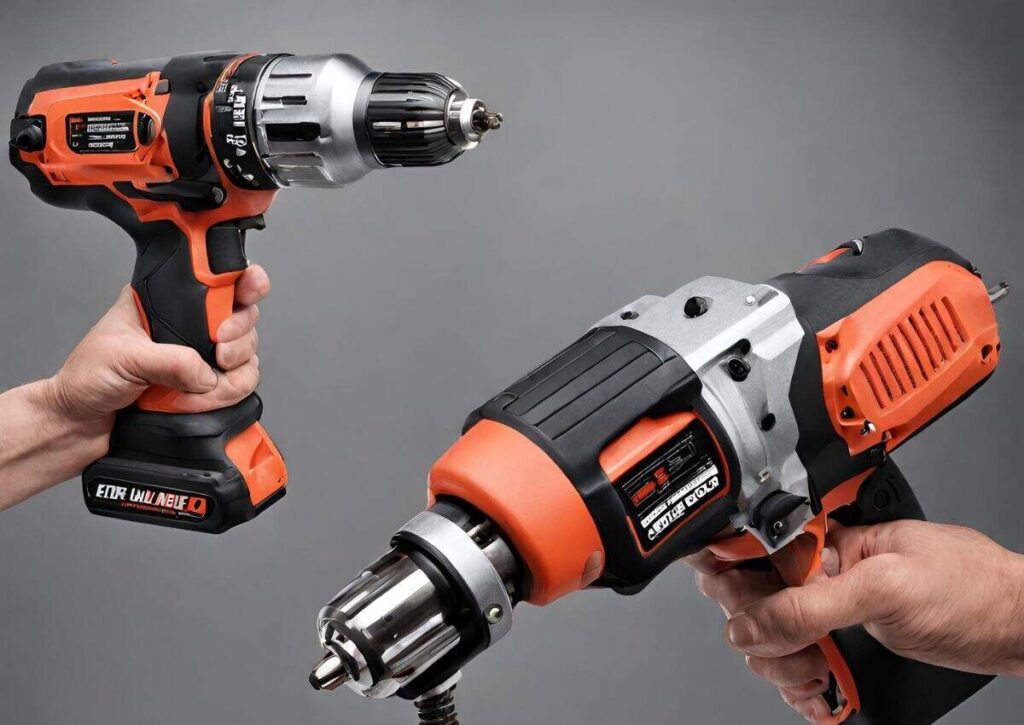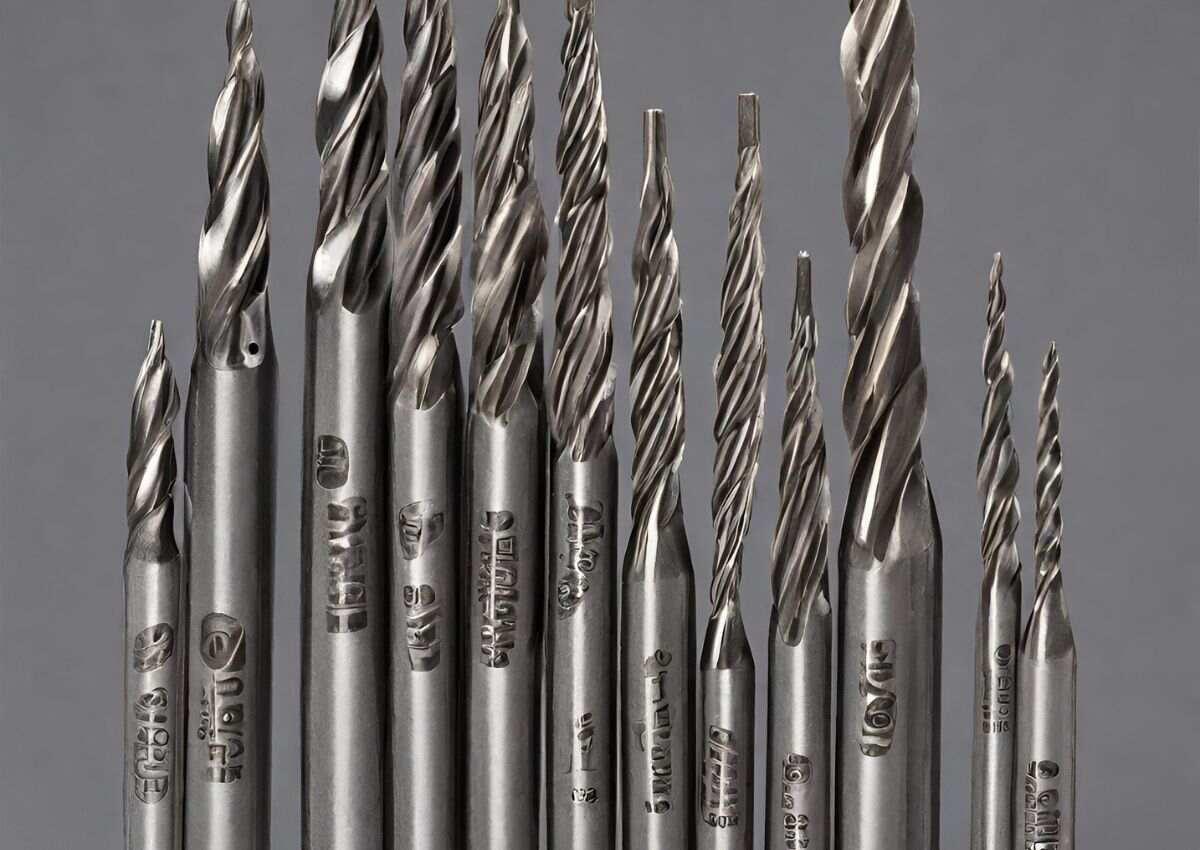Drilling holes and fixing things with screws is something many of us do, and having the right tools can make a real difference.
To use a left-handed drill bits, insert it into a drill, ensuring it’s securely fixed.
Position the bit at the center of the stuck screw or bolt, drill slowly in a counterclockwise direction, and stop when the fixture starts to loosen.
While most people are familiar with standard drill bits, left-handed drill bits might seem a bit unfamiliar.
Let’s delve into a comprehensive guide on how to use left-handed drill bits, especially if you’re just starting out with DIY tasks.
Understanding Left-Handed Drill Bits

Imagine your regular drill bit turning to the right, making holes or driving screws in that direction.
Well, left-handed drill bits do the opposite: they turn to the left, going counter-clockwise. This reverse rotation sets them apart from conventional bits.
Although it might seem a bit odd, these drill bits have several advantages, particularly when you’re dealing with stubborn or stuck screws.
Related Post: Sharpen A Drill Bit Like a Pro
When And Why to Use Left-Handed Drill Bits
Left-handed drill bits can be a real savior when you’re dealing with screws or bolts that are jammed or stuck.
Their counter-clockwise turn might just be what you need to loosen those stubborn fixtures.
They’re also incredibly valuable when it comes to extracting broken fasteners or working with materials that are prone to damage, as the backward rotation can help remove them without causing further harm.
Selecting The Right (Left-Handed Drill Bit)
Just like regular drill bits, left-handed drill bits come in various sizes. Picking the right size is crucial for the success of your task.
You should select a left-handed bit that closely matches the size of the screw or bolt you want to remove or the hole you need to create.
A Step-by-Step Guide To Using A Left-Handed Drill Bit

1. Preparing Your Tools and Workspace
Before you start, gather all the tools you need: a reversible drill, left-handed drill bits, pliers or a wrench, and safety gear such as safety glasses.
Ensure your workspace is stable and well-lit. Secure the material you’re working on using clamps if necessary.
2. Inserting the Bit in the Drill
Place the left-handed drill bit into the drill chuck and make sure it’s tightly secured. If your drill has a reversible setting, switch it to turn counter-clockwise.
3. Positioning and Drilling
Put the drill bit at the center of the screw or bolt you want to remove. Apply gentle pressure, ensuring the bit remains straight.
Start drilling slowly to avoid slipping. The left-handed bit will attempt to grip and turn the screw or bolt in reverse.
4. Monitoring and Removing
Keep a close watch as you drill. If the screw or bolt starts to come loose, stop drilling and switch off the drill. Use pliers or a wrench to remove the fixture completely.
5. Finishing Up
After removing the stuck screw or bolt, inspect the hole left behind. Depending on your requirements, you might want to fill it with putty, filler, or use a new screw.
Tips for Using Left-Handed Drill Bits
Be Patient and Gentle
Take your time and avoid applying too much pressure while using the left-handed drill bit. Allow the drill bit’s counterclockwise motion to assist in the process.
Using force might cause more problems, so a gentle touch is key.
Use Proper Safety Gear
Always put on safety glasses before using the drill bit. These glasses shield your eyes from any small pieces that might break off during drilling. Safety glasses help keep your eyes safe from harm.
Seek Professional Help When Needed
If the screw or bolt seems stuck or you’re unsure how to proceed, it’s a good idea to ask for help from a professional.
Seeking assistance can prevent any accidental damage and ensure the job is done safely and correctly.
Exploring the Benefits of Left-Handed Drill Bits

Assistance in Removing Stuck Fasteners
Left-handed drill bits aid in removing stuck screws or bolts by utilizing their counterclockwise rotation.
This reverse motion can sometimes grip onto and ease the loosening of stubborn fasteners, making extraction a bit easier.
Minimizing Material Damage
These drill bits are designed to extract fixtures without causing additional harm to the material.
The counterclockwise rotation allows them to engage with the fastener without adding more damage, making them a valuable tool for delicate materials or situations.
Versatility In Usage
Besides their primary function of removal, left-handed drill bits are versatile. They can be employed in a variety of drilling tasks, acting as regular drill bits.
Their counterclockwise rotation can be beneficial in specific drilling scenarios, expanding their utility beyond just extraction purposes.
In Conclusion
Left-handed drill bits might seem unusual at first, but they can be incredibly helpful in specific situations.
By understanding how they work and using the right techniques, you can add an extra tool to your toolkit, making those challenging DIY tasks a bit easier.
Remember, practice is key. Don’t hesitate to try left-handed drill bits on various materials to gain confidence.
Take it slow, be patient, and enjoy discovering how these unique tools can make your DIY tasks a breeze.
FAQs
What makes a left-handed drill bit different from a regular drill bit?
Left-handed drill bits have a reverse rotation, turning counterclockwise as opposed to the typical clockwise motion of standard bits.
This counterclockwise movement allows them to grip and potentially loosen stuck or stubborn screws or bolts.
Can left-handed drill bits be used for regular drilling tasks?
Yes, left-handed drill bits can serve in various drilling applications beyond just removing stuck fasteners.
They can be used for creating holes and performing regular drilling tasks, especially in instances where their counterclockwise rotation might be beneficial.
How do I determine the right size of a left-handed drill bit for my project?
Selecting the appropriate size of a left-handed drill bit is crucial for successful use.
Choose a bit that closely matches the size of the screw or bolt you want to remove or the hole you intend to create.
Matching the bit size ensures effectiveness and prevents potential damage to the material.
Are there safety considerations specific to using left-handed drill bits?
Safety measures for using left-handed drill bits are similar to those for standard drilling activities.
It’s essential to wear appropriate safety gear, such as safety glasses, to protect your eyes from debris. Additionally, use clamps to secure the workpiece and avoid slippage during drilling.
In what situations should I consider using a left-handed drill bit over other extraction methods?
Left-handed drill bits can be particularly advantageous when dealing with broken or stuck fasteners.
They offer an alternative extraction method that may aid in the removal of these fixtures without causing further damage to the material.
If a fastener is resisting traditional extraction methods, employing a left-handed drill bit might offer a different approach to extraction.
Related Posts
Can You Buy Individual Drill Bits









